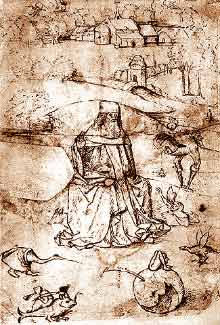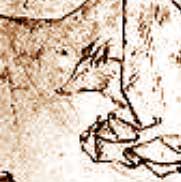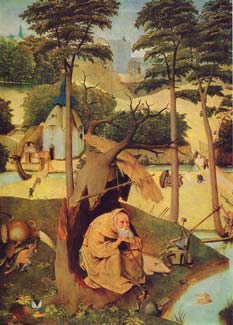Dutch, (1450-1516)

-
Temptation of St. Anthony
- (c. 1515), pen and bistre on paper
- Kupferstichkabinett, Berlin
-
Editor’s Note:
Bosch’s pictures have always fascinated viewers. Described as wondrous and strange fantasies, in earlier centuries most people regarded him as the inventor of monsters and chimeras.
Bosch created bizarre worlds of monsters, forbidden pleasure, and earthly folly. References to astrology, folklore, witchcraft, and alchemy, in addition to the theme of the Antichrist and episodes from the lives of exemplary saints, are all woven together into a labyrinth of late medieval Christian iconography.
Scholars differ in their interpretation of Bosch’s art. Though the meaning of his paintings is now difficult to comprehend, they were certainly constructed as allegories and social commentaries. Most agree that his pictures show a preoccupation with the human propensity for sin in defiance of God, as well as with God’s eternal damnation of lost souls in hell as a fateful consequence of human folly.
Here is a close up of the pig:

About the Artist
Hieronymus Bosch, Dutch, (1450-1516). A Flemish painter, born as Jeronimus van Aken, he took the name Bosch from the Flemish town of Hertogenbosch, where he spent his entire artistic career. Bosch is known for his enigmatic panels illustrating complex religious subjects with fantastic, often demonic imagery.

